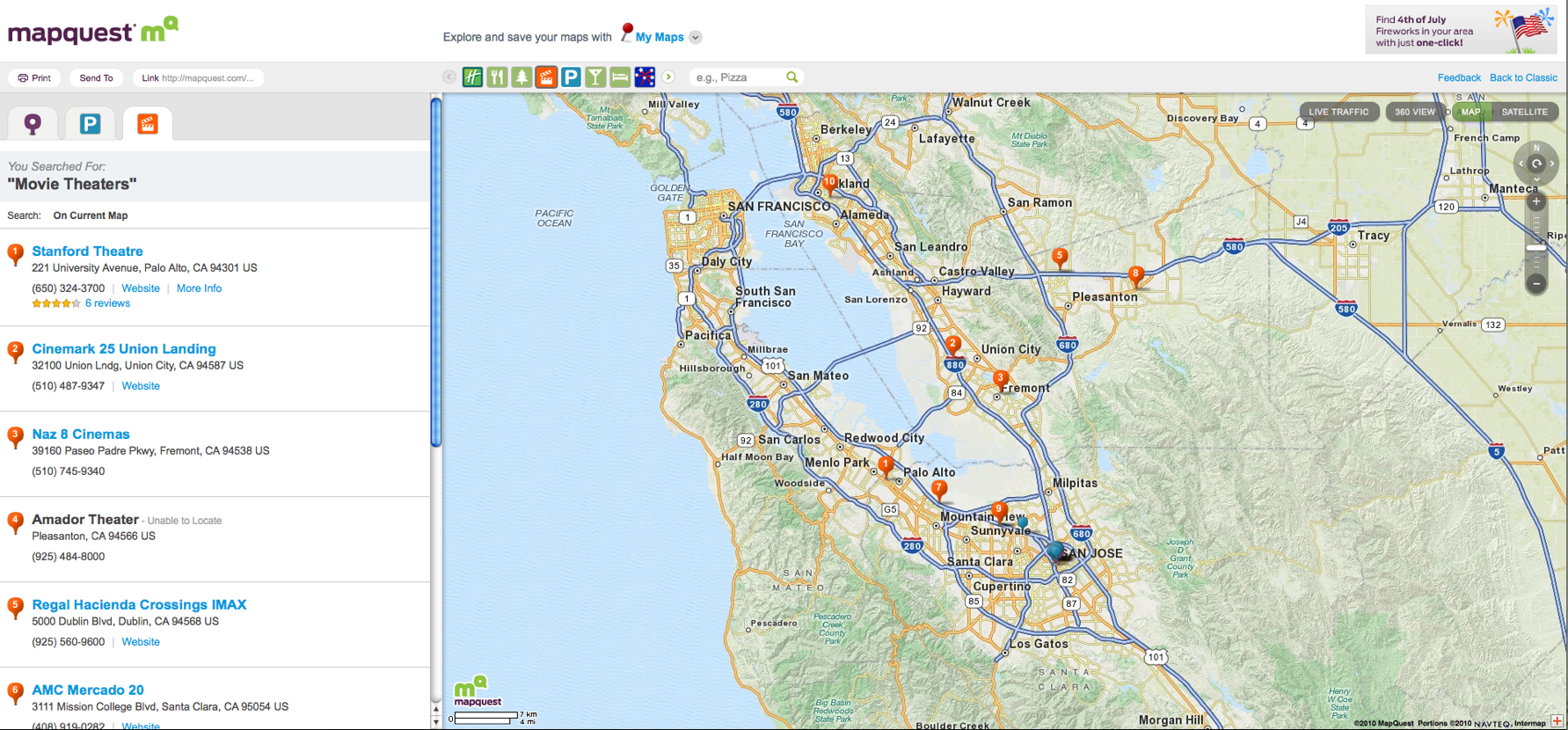Mapquest gets a makeover but is it enough to change habits?

There are still plenty of people out there who say, "Just give me the address and I'll Mapquest it." But how many of those people are actually using Mapquest for mapping and directions?
The online product that was once synonymous with Web-based mapping has gone through a major makeover, including the addition of a Google Street View-like feature called 360 View. The company said this week that its new customer experience treats mapping more like a journey, going beyond maps and directions to help users discover new places.
I can see that. During a quick run through the new Mapquest, I looked up my own home address and found nearby parks, bars, restaurants, coffee shops, hotels and more - all without conducting a search. Mapquest has incorporated commonly searched locations into clickable icons at the top of the map. And when I click on one of the results, I can get directions, further refine my search or save it to my collection of maps.
The new Mapquest also comes with live traffic updates and even a one-click button for seasonal events, such as July 4th Fireworks shows that are being showcased currently. And there's a mobile version for iPhone and some BlackBerrys, as well.
In all, Mapquest has done a nice job with its mapping makeover. But is it too late?
After all, Google, Yahoo and even Bing maps have done some innovative things with maps to keep coming back. Images in Google's Street View, for example, are widespread, while Mapquest's 360 View has images from limited places. Bing also raises the bar with some of its tools, such as the Bird's-Eye view to its maps, which offers a better way of viewing a place through satellite imagery.
Sure, the new Mapquest has some good tools and looks good - but I don't know that there's anything special there that could entice anyone to change their mapping habits and start using another service.
